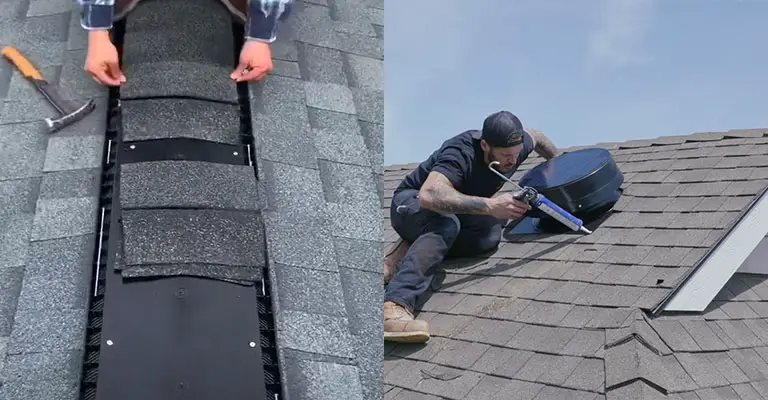Unlocking Comfort and Savings: 10 Benefits of Smart Thermostats
It’s time to bid farewell to the days of fiddling with your thermostat, trying to strike the perfect balance between comfort and energy savings. Thermostats have taken center stage in the world of home automation, offering a plethora of advantages that can make your life more efficient, comfortable, and eco-friendly.
From learning your preferences to remote control capabilities, these ingenious devices are transforming the way we interact with our HVAC systems. Join us as we delve into the 10 remarkable benefits of smart thermostats that are reshaping the way we experience climate control at home.
1. Energy Efficiency
Smart thermostats, such as Johnson Controls thermostats, offer significant benefits when it comes to energy efficiency. These devices are designed to learn your heating and cooling preferences and adjust the temperature accordingly, ensuring that your home is always at the ideal comfort level without wasting energy. By optimizing your HVAC system’s performance, smart thermostats can reduce energy consumption by up to 20%, helping you lower your utility bills while minimizing your carbon footprint. They also have features like adaptive recovery, which predicts when to start heating or cooling to reach your desired temperature at the scheduled time, further enhancing energy efficiency.
2. Cost Savings
Investing in a smart thermostat, such as thermostats LUX, can lead to substantial cost savings over time. On average, households can expect to save around $100 to $200 annually on heating and cooling costs by using these devices. For example, if your annual heating and cooling expenses are around $1,000, a 20% reduction due to a smart thermostat can result in savings of $200 per year. Additionally, many utility companies offer rebates and incentives for installing smart thermostats, further reducing the upfront cost and increasing your long-term savings.
3. Remote Temperature Control
One of the most convenient features of smart thermostats, including Siemens thermostats, is the ability to control your home’s temperature remotely. Whether you’re at work, on vacation, or simply in another room, you can adjust the thermostat settings through a mobile app or a web portal. This remote control functionality allows you to optimize your HVAC system’s operation in real-time, ensuring that you’re not wasting energy when you’re not at home. You can also remotely turn on the heat or air conditioning before you arrive home, ensuring a comfortable environment when you walk in the door. This flexibility and convenience contribute to a more efficient and comfortable living space.
4. Learning and Adaptive Capabilities
Smart thermostats come equipped with advanced learning algorithms that continuously adapt to your household’s heating and cooling preferences. They analyze your daily routines, temperature adjustments, and even weather conditions to create a customized schedule that optimizes energy usage. Over time, these devices become more accurate in predicting your comfort needs, reducing the need for manual adjustments. This adaptability not only enhances your comfort but also maximizes energy efficiency by avoiding unnecessary heating or cooling.
5. Scheduling and Automation
With smart thermostats, you can easily create heating and cooling schedules that align with your daily routine. You can set different temperature profiles for different times of the day or days of the week. For example, you can program the thermostat to lower the temperature while you’re at work and raise it just before you return home. This automation ensures that your home is comfortable when you need it to be and conserves energy when you don’t. Plus, you can make adjustments on the fly if your plans change, ensuring that your home’s temperature always matches your needs.
6. Integration with Smart Home Ecosystems
Smart thermostats are often designed to integrate seamlessly with other smart home devices and ecosystems. This integration allows you to create a unified and intelligent home automation system. For instance, you can link your thermostat with voice assistants like Amazon Alexa or Google Assistant, enabling voice commands to control your HVAC system. You can also connect it to smart lighting, locks, and security systems, enabling coordinated actions. This synergy between devices not only enhances convenience but also maximizes energy savings by orchestrating various aspects of your home’s energy consumption.
7. Energy Usage Insights
Smart thermostats provide valuable insights into your energy consumption patterns. They often come with user-friendly apps or web interfaces that display detailed information about how and when your HVAC system operates. You can view energy usage history, track temperature trends, and even receive reports that show where you can make further improvements in energy efficiency. These insights empower homeowners to make informed decisions about their heating and cooling habits, helping them identify areas where they can reduce energy consumption and ultimately save money.
8. Geofencing Technology
Many smart thermostats incorporate geofencing technology, which uses your smartphone’s location to determine whether you are at home or away. When you leave a predefined geofence (an area around your home), the thermostat can automatically adjust the temperature to an energy-saving setting. Conversely, when you approach your home, the thermostat can start heating or cooling to ensure a comfortable environment upon your arrival. Geofencing technology minimizes the need for manual temperature adjustments and ensures that energy is not wasted when no one is home, contributing to both energy efficiency and convenience.
9. Improved Comfort and Convenience
Smart thermostats enhance the overall comfort and convenience of your home. They provide precise temperature control, allowing you to set your preferred temperature down to a degree. Additionally, features like temperature scheduling and remote control ensure that your home is always at the right temperature when you want it to be, without the need for constant adjustments. This level of control and automation not only optimizes comfort but also simplifies your daily routine, making your life more convenient and enjoyable. Whether it’s waking up to a warm house in winter or coming home to a cool environment on a hot summer day, smart thermostats cater to your comfort needs.
10. Environmental Impact Reduction
Using a smart thermostat can contribute significantly to reducing your environmental footprint. By optimizing your heating and cooling systems, these devices help conserve energy and reduce greenhouse gas emissions. When you consume less energy for climate control, you indirectly decrease the demand on power plants, which often rely on fossil fuels. This, in turn, lowers carbon emissions and helps combat climate change.
Moreover, some smart thermostats provide eco-friendly features such as eco mode, which further minimizes energy usage during periods of low occupancy or when the home’s occupants are asleep. Additionally, many manufacturers are committed to sustainability, designing their products with energy-efficient components and packaging materials.
By choosing a smart thermostat with eco-conscious features and supporting environmentally responsible brands, you can make a positive impact on the planet while enjoying the benefits of a more comfortable and cost-effective home.
Wrapping Up
In conclusion, smart thermostats are more than just gadgets; they are powerful tools that offer a multitude of benefits. From saving you money on energy bills to enhancing your comfort and convenience, these devices have truly revolutionized the way we control and manage our home heating and cooling systems. With their ability to learn your preferences and adapt to your lifestyle, smart thermostats not only provide immediate advantages but also contribute to a greener, more sustainable future. So, if you haven’t already, it’s time to make the switch to a smart thermostat and experience the countless advantages they bring to your home and your life.





